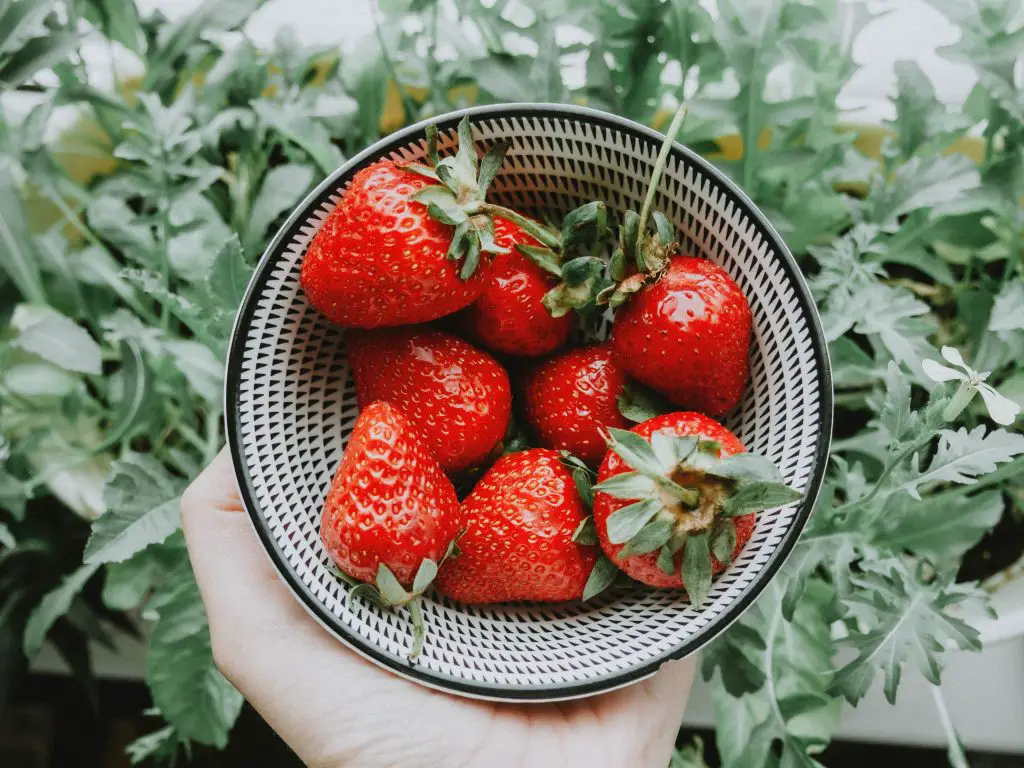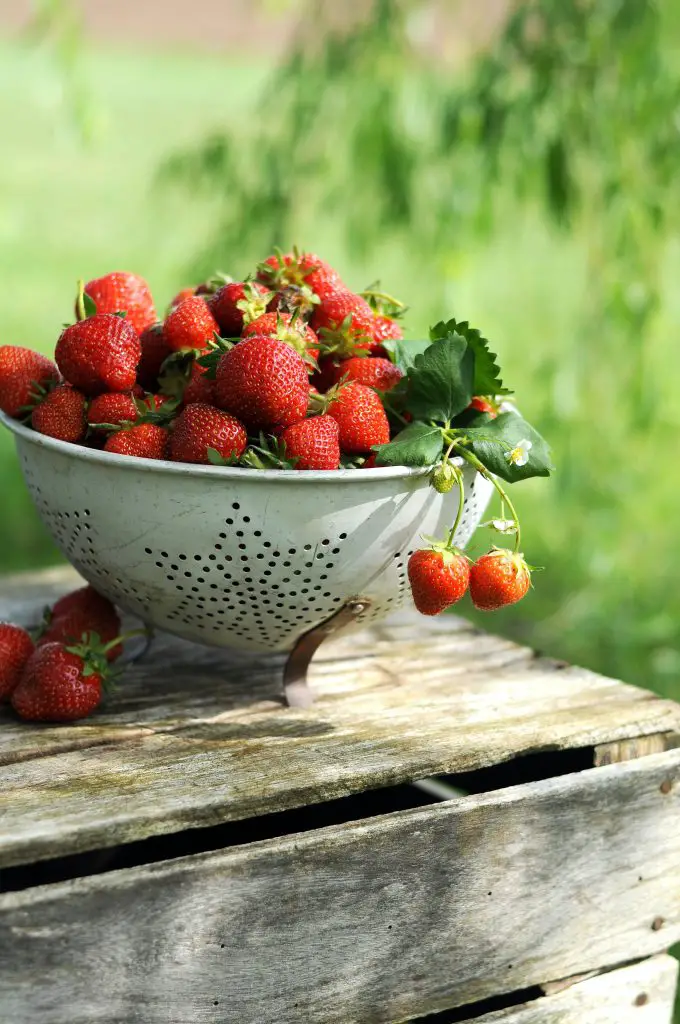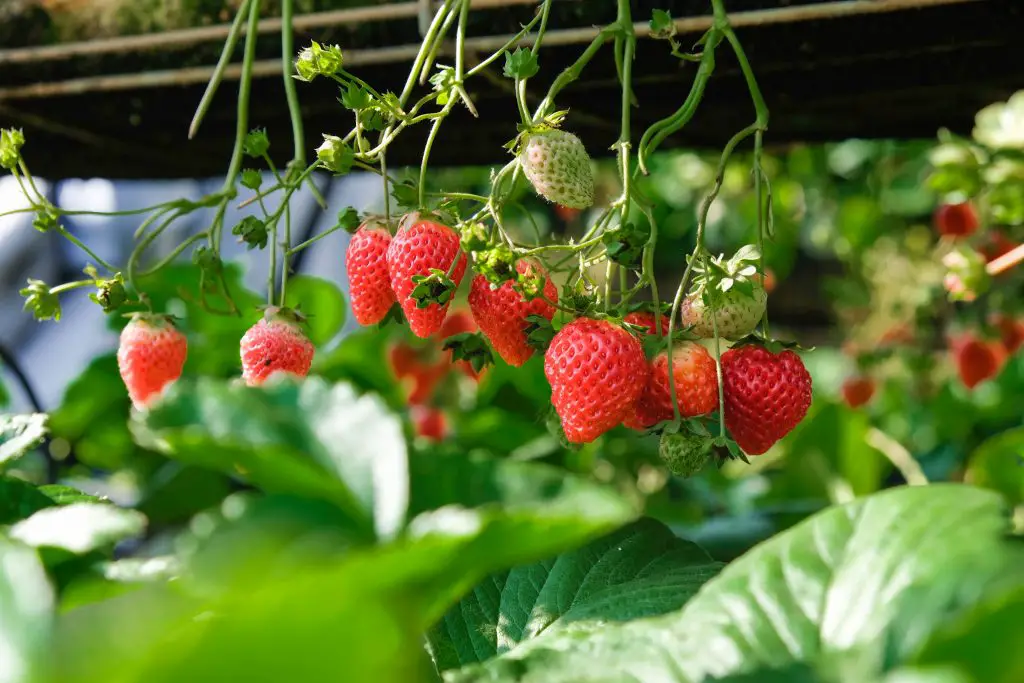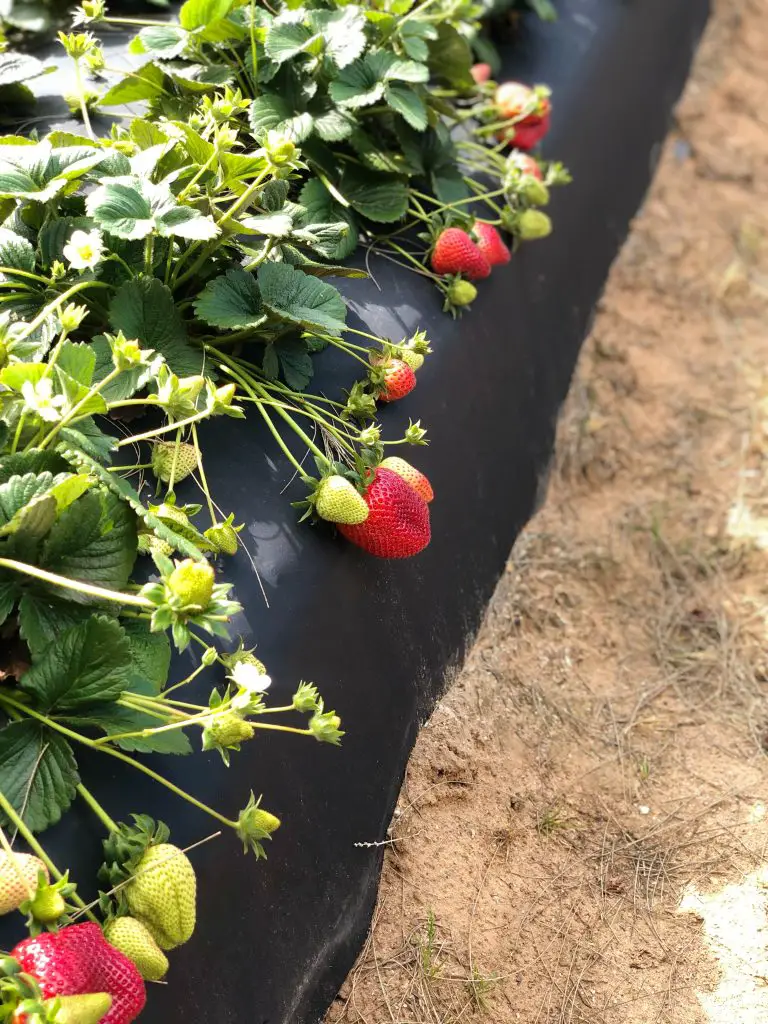How To Make Strawberry Plants Produce More Fruit? Growing strawberries at home is one of the most rewarding things you can do in a garden. The homegrown strawberries are so much sweeter than what you get from the supermarket or grocery store. So how do you maximize the output from your strawberry plants?
To maximize strawberry production there are several things that can be done which include selecting a high yielding variety, replacing any strawberry plants that are older than 3 years, removing runners (when not being used to propagate additional plants), using black plastic mulch, and ensuring that the plants have adequate water and nutrients.
When you give the strawberry plant the conditions they prefer you can reasonably expect a yield of 2 to 3lbs (1 to 1.5 kg) per plant, though there are some academic studies that have shown much higher yields than that.

Strategies You Can Use To Make The Most Out Of Your Strawberries Harvest
Select A High Producing Variety
One of the more important aspects of maximizing the output of the strawberry patch is choosing a high-yielding variety. There are a range of high yield varieties that have been tested in academic studies, the top-performing varieties include;
- Radiance
- San Andreas
- Chandler
- Benicia
- Camino Real
- Sweet Ann
- Festival
- Albion
Of these varieties the one we recommend most is Chandler because it is readily available in most regions around the world, it is relatively high yielding, and is known to produce a large number of runners making it easy to propagate.
Additionally, Chandler is a relatively cold-hardy variety that is more suited to cooler locations. This variety does not generally require winter protection unless temperatures fall below 20ºF (-7ºC). At these temperatures, the crown can be damaged and the plant will require protection in the form of a row cover.
However, buds, flowers, and fruit are not as cold tolerant as the crown. Buds before opening can tolerate down to 22-27ºF (-6 to -3ºC), open flowers can tolerate 30ºF (-1ºC) and small green fruit can stand temperatures down to 28ºF (-2ºC). As such frost protection is critical in early to mid-spring as a temperature drop into the mid-20s (-6 to -3ºC) can result in a significant yield reduction.

Replace The Plants Every Three Years
Strawberry plants are a short-lived perennial plant that typically lives around 5 to 6 years. However, the plants are at their most productive in years 2 and 3 but still produce a reasonable crop in year 1. A comparison of the yield of one and two-year old ‘Chandler’ plants from 2002 academic study shows the relative yield. BR1 and BR2 denote 2 sources of bare-rooted plants and plug denotes plants planted in the soil prior to purchase.

After the initial 2 to 3 year period, the strawberry plants lose their vigor, and berry production declines rapidly. To maintain a reasonable yield strawberry plants need to be replaced regularly. This is best done by regularly propagating plants using the runners produced.
The variety ‘Chandler’ is particularly suited to the production runners, producing 9 runners per plant compared to an average of 5 to 6 for other varieties. To read more about this click here.
To manage the constant replacement of strawberries many gardeners have one, two, and 3-year-old garden beds which allows them to easily keep track of the age of the plants and ensure that the plants are being constantly refreshed.

Remove Runners
Strawberry plants will produce runners in the early part of the season. To optimize fruit production it is important to remove them unless you are planning to propagate plants from them. The reason for this is that plant will divert its energies away from fruit production and crown development within the mother plant. This will have a negative effect on the current years’ crop and the following year’s crop.
There are a couple of strategies that can be used to minimize the effect that propagation through runners has upon the overall yield, as it is a necessary process to keep your strawberry patch growing.
The first strategy is to utilize runners only from 3-year-old plants as this will not affect the subsequent years’ crop if they are removed from your patch as they should be.
The second strategy is to keep the number of runners to a maximum of two per plant to minimize the impact they have upon the yield of a given plant.
The third strategy is to reduce the number of plants you propagate from by having many runners produced from a single plant. While this will certainly affect the performance of the mother plant it will allow other plants to be unaffected by propagation.
Mulch Using Black Plastic
Using mulches, in general, helps to retain the moisture in the soil, however, using black plastic mulch has been shown to increase the yield significantly particularly in regions that have cool winters. The reason for this is because black plastic mulch increase the soil temperature accelerating the rate of growth. Additionally, the plastic mulch is also extremely effective at suppressing weeds that compete for nutrients in the soil.
An article by Assiut University compared the effects of growing strawberry with no mulch, clear plastic mulch and black plastic mulch. The results of the trial indicate that black plastic mulch produce approximately 30% more strawberries.
| No Mulch | Clear Plastic | Black Plastic | % Difference Black Plastic Vs No Mulch | |
| Fruit Yield – Season 1 | 1645 | 1538 | 2087 | 27% |
| Fruit Yield – Season 2 | 2610 | 2769 | 3406 | 30% |
An interesting finding from this particular study is that clear plastic has a negligible effect upon the yield which researchers suspect is related to the fact that clear plastic has minimal effect upon the soil temperature. At the University of Guelph they looked at the effect of a range of different colored plastic mulches and generally came to the conclusion that black mulches were the best option.

Optimising The Soil Conditions For Strawberries
Favorable soil conditions are a prerequisite for the establishment of a successful strawberry crop. To create these conditions the New South Wales Department of Primary Industries advises adding well-rotted manure to the soil in the Autumn prior to planting bare-rooted strawberry runners. Adding the manure a few weeks prior to the planting of the runners prevents any chance of the roots being burnt by the fertilizer.
Additionally, the soil should be free draining to avoid any chance of root rot. In locations where the soil is heavy and contains lots of clay, it is advisable to add plenty of compost and gypsum which will help break up the clay. In cases where the drainage remains poor, it is advisable to mound up the strawberries in a similar manner to what is done on commercial farms.
Once the plant becomes established and the weather starts to warm up it is advisable to fertilize again in the spring. The secondary fertilization will ensure that that the plants have plenty of nutrients. However, despite fertilization of the strawberries it is still possible to have a deficiency in nutrients which can present in many different ways.
A list of common symptoms and possible causes is presented in the table below;
| Symptoms | Possible Causes |
| Uniform Yellowing Of Leaves | Nitrogen or Sulfur deficiency. Can also be caused by poor soil drainage |
| Yellowing Of Leaves With Veins Remaining Green | Zinc, Manganese or Iron Deficiency |
| Dark Green Foliage | Phosphorus Deficiency |
| Leaf Show Signs Of Scorching | Potassium Or Magnesium Deficiency Can also be Salt Toxicity |
| Growing Points Damaged With Restricted Growth | Calcium or Boron Deficiency |
| Poor Pollination and Bumpy Fruit | Boron Deficiency or Environmental Factors ie Frost Damage Or High Temperatures During Flowering |
| Hard seeds | Calcium Deficiency |
| Soft, Poor Colour and Flavour | Potassium Deficiency |
In terms of water, it is important to water the plantrs regularly as they are shallow-rooted and tend to dry out relatively fairly quickly. This is particularly the case during hot dry spells. But it is also important not to allow the plants to remain in soggy conditions.
When watering it is best to avoid overhead sprinklers when watering strawberries particularly if you use plastic mulch as it is quite inefficient. The best time to water is early morning as the plants have all day to dry before evening.
However, if you are growing strawberries in containers or pots it is important to check the moisture daily as pots have a tendency to dry out quickly. It is also important to note when using organic mulch rather than black plastic that piling mulch near the base of the plant has the potential to promote rot and other moisture-related plant diseases. It is best to leave a small gap between the mulch and the plant to prevent this from occurring.
